The latest treatment of Huanglong disease in citrus and its comprehensive control
Just wrote an analysis article on Huanglong disease in Gannan,"Citrus AIDS" Huanglong disease spread in Gannan, the world's largest navel orange producing area, is a natural disaster but also a man-made disaster,"can be used as an answer, Huanglong disease now there is no way to cure, but if the local can decisively take some measures, unified prevention and control, Gannan can still be saved.
--------------------------------------------------------------------------------------------------------------------------------------------
If you have seen the sci-fi film Interstellar, you will be impressed by the spread of crop blight on Earth. One day in the future, crops will be incurable, pieces of corn and okra will die, and human beings will have to wait for death.
Science fiction reflects reality. In 2015, Jiangxi Gannan, the largest navel orange producing area in the world, infected large areas of citrus with Huanglong disease known as "citrus AIDS". Many farmers can only cut down the navel orange planted for many years in pieces, and dare not plant it again.
In this regard, through investigation and statistics, the Harvest Research Office found that the large-scale outbreak of Huanglong disease in southern Jiangxi had a great relationship with the large-scale unscientific planting in southern Jiangxi for many years. It seemed to be a natural disaster, but in fact it was a man-made disaster.
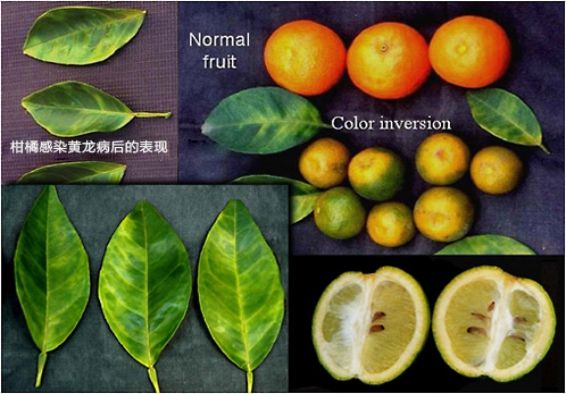
Figure 0: comparison between Huanglong disease navel orange and normal navel orange
"Citrus AIDS" Huanglong disease is a terminal disease of citrus, which can not be cured but can only be cut.
Huanglong disease is a destructive disease of citrus transmitted by citrus planthopper, and it is also a malignant disease of special concern in domestic citrus producing areas, like "cancer cells". It spreads very fast and is called "citrus cancer" and "citrus AIDS". Huanglong disease has two characteristics:
1. There is no cure, and citrus trees can only be cut off after infection.
2. It is easy to spread, and the transmission speed is very fast when the citrus planthopper sucks the diseased tree and carries the virus. Ganzhou City, as the main producing area of navel orange in China, is suffering from Huanglong disease and showing a trend of aggravation.
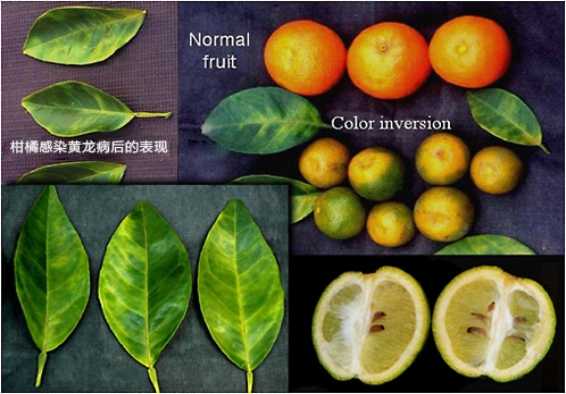

Figure 1: normal navel orange and Huanglong disease navel orange, fruit and leaf comparison
1. Huanglong disease is a world problem and cannot be cured.
Huanglong disease is thought to be caused by a bacterium that grows exclusively in the phloem of citrus. Its transmission routes include grafting and citrus planthopper transmission. At present, all known citrus varieties and citrus related species will be infected with Huanglong disease. The susceptible plants not only can not produce economic value, but also highly susceptible varieties such as navel orange and grapefruit will gradually die out in a few years. Once the fruit trees are infected, they can only be cut off.
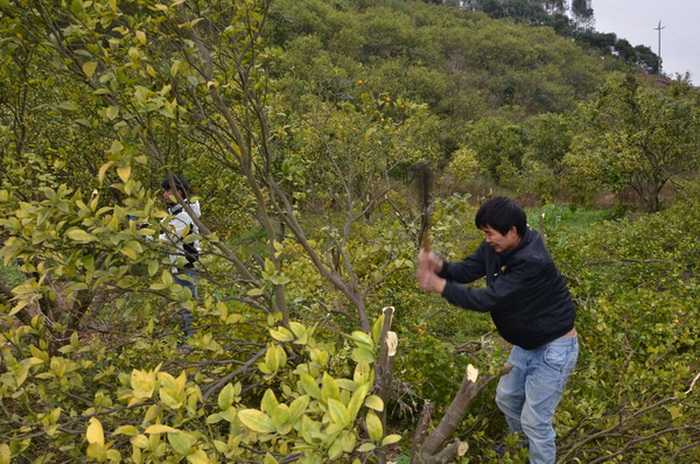

Figure 2: citrus trees infected with Huanglong disease can only be cut down
2. Citrus planthopper spreads diseases, and poor management will spread on a large scale.
Citrus planthopper is not only the main pest in citrus shoot stage, but also the transmission vector of citrus Huanglong disease. Adults often lay eggs on the tender shoots of diseased trees, and after hatching nymphs, they can absorb the juice of tender shoots, which can produce a large number of infected adults, and adults fly to new plants to spread Huanglong disease. The main management strategies for Huanglong disease are to use insecticides to control wood lice, dig up susceptible plants and cultivate sterile seedlings. The main manifestations of poor management in the field are as follows:
The main results are as follows: (1) the planthopper is not controlled in time, resulting in a large number of poisonous adults.
(2) it was found that the plant of Huanglong disease was not cut and treated in time and became a focus.
(3) excessive use of drugs and fertilizers leads to soil consolidation and root rot.
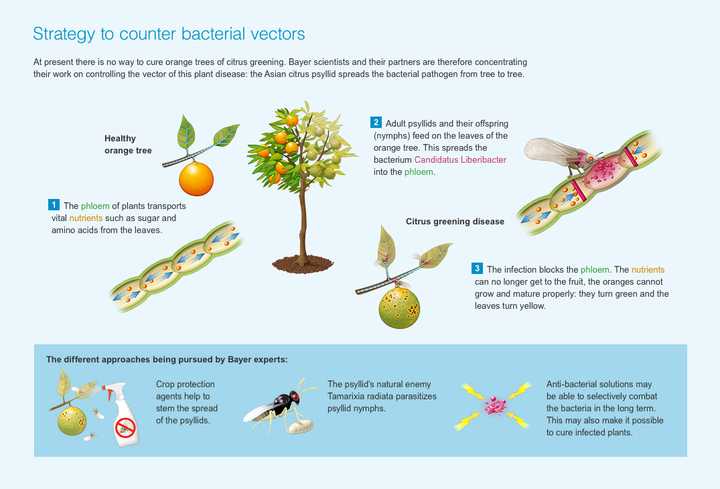

Figure 3: Mechanism of Huanglong disease transmission by citrus psyllid
------------------------------------------------------------------------------------------------------------------------------------------
A Huanglong Disease Destroys Ganzhou Fruit Farmers '10 Years' Efforts
1. In 2014, Ganzhou navel orange production accounted for 48% of China, with high concentration.
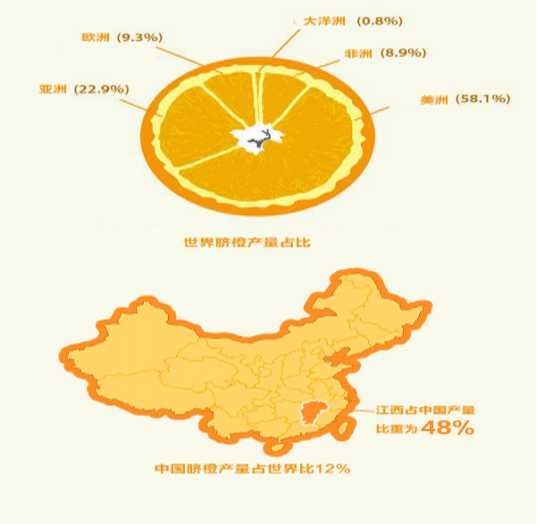

Figure 4: China accounts for 12% of the world's navel orange production, and Jiangxi navel orange production accounts for 48% of China's.
According to statistics, the output of navel oranges in Gannan region reached 1.23 million tons in 2014, accounting for about 48% of the domestic output. It is truly the largest producing area of navel orange in China. In 2014, the planting area of navel orange in Gannan is 1.68 million mu, the planting area of navel orange in a single area ranks first in the world, and the output ranks third in the world. The high concentration promotes the development of citrus industry, but it also brings the risk of disease spread.
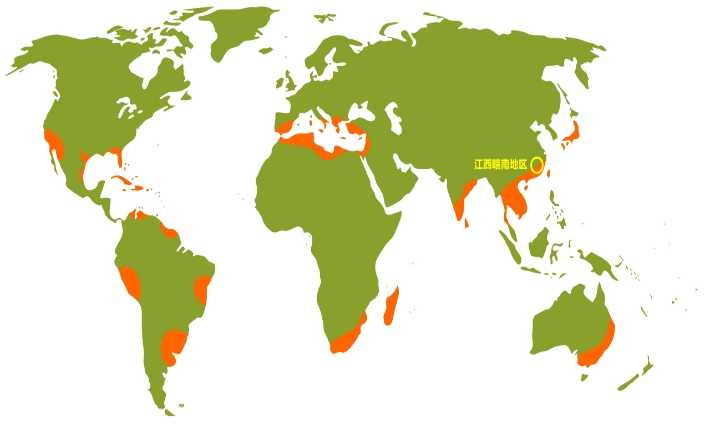

Figure 5: a world-famous citrus producing area, Gannan navel orange has a single planting area of 1.68 million mu in 2014, the first in the world.
2. If the fruit trees are cut down, the fruit growers' ten years' hard work will be destroyed.
Huanglong disease began to break out on a large scale in 2012, although according to the statistics of the Ganzhou fruit industry department, the planting area of navel orange decreased from 1.78 million mu to 1.68 million mu in three years.
However, according to the private survey, the situation seems to be more serious. In the past three years, the area of diseased trees in Xunwu, Anyuan, and Xinfeng counties where navel orange cultivation is most concentrated in Gannan has reached almost 1/3. The planting area of Xunwu County, which has the largest planting area of navel orange, has decreased from 600000 mu to more than 400,000 mu. 1.5247 million susceptible plants were confirmed in Xinfeng county in autumn and winter of 2013, with an incidence of 11.8%. And Huanglong disease has an incubation period, and diseased trees will continue to appear in the next few years.
Some farmers say that it takes about seven or eight years from planting to high yield of navel oranges, and now many infected orchards are in the high-yield period, and this Huanglong disease has destroyed their painstaking efforts for nearly a decade.
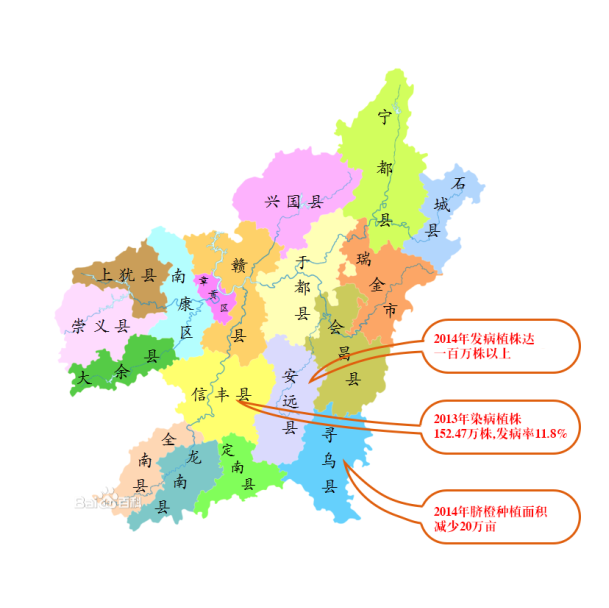

Figure 6: losses in Xinfeng, Anyuan and Xunwu counties, the main navel orange producing areas in southern Jiangxi
Farmers suffered heavy losses and then turned into venture capital, so they had to go out to work again.
1. There was a heavy loss of income in that year.
Chen Hong, a farmer who lives in Guanzhou Village, Nanqiao Town, Xunwu County, Jiangxi Province, began growing navel oranges and tangerines six years ago, with a maximum of nearly 1000 fruit trees at home. With the widespread outbreak of Huanglong disease, he cut down nearly 300 fruit trees in 2013 and another 600 to 700 in 2015, almost all of them. Small and medium-sized growers of his size are very common in the area. According to the investigation by the Harvest Research Office, the whole navel orange tree was cut down in Wangwu Village, Chengjiang Town, Xunwu County. Most of the fruit forests in Guizumao Town, Xunwu County have also been cut down, and most of the locals have gone out to work again after cutting down trees.
It will take 3 years for newly planted fruit trees to bear fruit.
I had no choice but to cut down the navel orange tree that had been planted for many years. There are 60 fruit trees per mu of navel orange, with an income of 10, 000 to 15000 yuan. On the other hand, it takes about 3 years for navel orange to grow to fruit, and it takes about 5 years to enter the high yield period. In the early stage, the input of water, fertilizer and management per mu of land needs to spend tens of thousands of yuan, and the investment is very high.
(3) Huanglong disease may recur at any time and the risk is higher.
After cutting down the navel orange tree, many farmers do not dare to plant navel oranges again, because navel oranges take three years to hang, and Huanglong disease is spread by wood lice, so there is a high risk of replanting and may be infected again at any time. On the other hand, some people grow Camellia oleifera and some people grow vegetables, but their income is not as high as navel oranges. For example, the income of one mu of Camellia oleifera is 3000-4000 yuan a year after high yield, which is far less than that of navel oranges. As a result, some farmers simply let their land be abandoned and go out to work, or switch to other businesses.
Following the trend of planting, the local ecological environment is too single, which lays a hidden danger for the disease explosion.
1. Long-term poverty in Gannan, growing navel oranges is an important way to get rich locally.
Southern Jiangxi is a large concentrated and extremely poor area in the country, and planting navel oranges is an important local way to get rich, because the local area is particularly suitable for growing navel oranges, and the output value of one mu of navel oranges can reach more than 10,000 yuan after high yield, so there is "one navel orange tree." equivalent to three pigs. Through large-scale planting of navel oranges, the per capita net income of farmers in Gannan has increased from 4182 yuan in 2010 to about 6970 yuan in 2014.
2. the effect of getting rich allows local people to follow suit and grow navel oranges.
Based on 60 trees per mu, each tree produces more than 100-200 jin navel orange, the market price is about 1.5-2.9 yuan, and the output value of navel orange per mu is close to 20,000 yuan. This wealth effect attracts farmers to plant a large number of them. Many people have dug up Camellia oleifera and other crops and planted navel oranges one after another, and many of the original mountain forests have also been converted into fruit forests. Not only do farmers plant trees, but local shopkeepers, teachers, and civil servants also plant navel oranges in almost every house. at the same time, many outsiders come to Ganzhou to rent forests and grow navel oranges.
According to statistics, the planting area of navel orange in southern Jiangxi has increased rapidly from more than 300,000 mu in 2000 to 1 million mu in 2005 and 1.78 million mu in 2012. Production has also increased rapidly from less than 100000 tons to about 1.23 million tons.
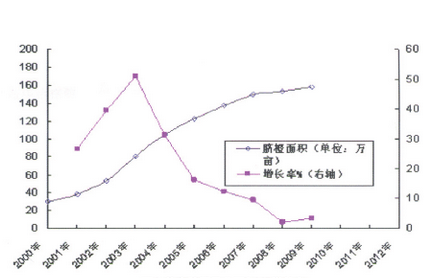

Figure 7: Gannan navel orange area and growth rate Source: Ganzhou Fruit Bureau
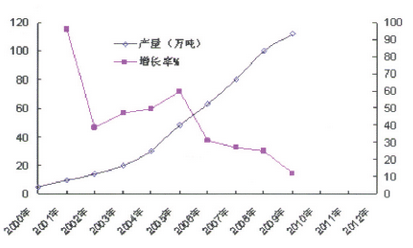

Figure 8: Gannan navel orange output and growth rate Source: Ganzhou Fruit Bureau
3. The government actively mobilized the enthusiasm of ordinary people to grow navel oranges, but did not scientifically control the red line.
It is understood that in the early years, in order to mobilize the enthusiasm of the people to grow navel oranges and accelerate to get rid of the local poverty, the county government put forward the slogan "work in the morning and go up the mountain in the afternoon" and mobilized party members and cadres to help farmers build orchards and grow navel oranges. it has given people very strong confidence and fully mobilized the enthusiasm of society to grow navel oranges, but did not draw a scientific red line.
Over the years, people in Ganzhou planted navel oranges all over the mountains and fields, and even dug and planted trees in the natural biological isolation zone between orchards and orchards. It destroys the protective barrier of ecological environment and creates conditions for planthopper to spread Huanglong disease. Although the government's approach has aroused the enthusiasm of farmers and expanded the planting area, the lag in scientific planning, scientific guidance and control measures is equivalent to increasing the risk of Huanglong disease outbreak by several times.
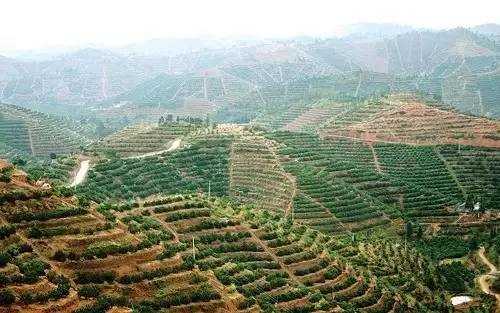

Figure 9: The mountain is full of navel orange trees
4. Eventually, the variety in this area is too single, the ecology is fragile, and Huanglong disease is very easy to destroy and infect.
In agricultural cultivation, single crop cultivation has always been a potential threat. From the perspective of natural law, single species cultivation has great potential safety hazards. If the planting structure is single and only one crop is planted in an area for a long time, soil fertility will decrease, biodiversity will disappear, and diseases and insect pests will increase.
Biological principles tell us that ecosystem stability depends on biodiversity. A complex ecosystem always has more feedback ability to environmental changes than a simple ecosystem, and the stability of agricultural systems also depends on the diversity of agricultural biological varieties. Crop monoculture reduces biodiversity in agroecosystems, increases instability and vulnerability, and reduces resilience to natural disasters and pests.
In Gannan area, 88% of navel orange varieties were Newhall, other varieties such as Penna and Neveline accounted for 8% and 3%. Single planting and single variety make navel orange planting in Gannan area have great hidden dangers.
Although single planting variety is beneficial to quality and yield control, it is not conducive to disease control. The outbreak of Huanglong disease in southern Jiangxi is deeply related to the single planting variety.
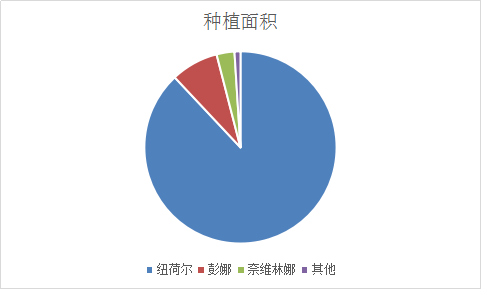

Figure 10: 88% of navel orange varieties planted in Gannan are Newhall.
5. Devastating ecological disasters caused by too single planting varieties are common in the world.
Large areas of single planting of cash crops such as bananas, rubber and so on have encountered too single global cultivation, resulting in rubber Fusarium wilt and rubber dead skin disease sweeping the world out of control, resulting in huge losses. Take banana Fusarium wilt as an example, the banana variety "Big Michel", which was once single planted in a large area of the world, has caused irreparable losses due to the outbreak of Fusarium wilt.
In the 19th century, the Irish took a potato variety called "Lumber" as a staple food, which was the largest single cultivation ever tried. As a result, potato Fusarium wilt spread, causing the famous "Irish Famine" in history. In September 1846, an estimated 3/4 of the potato harvest was destroyed, resulting in the worst famine in European history since the Black death. Ireland's population has halved.
- -
In the case of such a single ecology, there is no sufficient and effective management for prevention, control and protection.
1. The government does not pay attention to the construction of effective ecological isolation zones to make wood lice easy to spread Huanglong disease.
Citrus Huanglong disease also existed in the past, but the outbreak in such a large area is closely related to the rapid, blind and disorderly development of the industry. Studies have shown that in different citrus planting areas, the use of natural or artificial forests for ecological isolation can control the spread of wood lice to a certain extent and provide a living environment for the natural enemies of wood lice.
The ecological isolation zone is to prevent the spread of wood lice. Shelterbelt (Cunninghamia lanceolata or other tree species) can be planted in the ecological standard citrus orchard. Natural forests and shrubs can also be used to isolate the orchard into pieces like tofu. Physical isolation is used to control the harm of wood lice, which can be reasonably arranged according to the land use of each village.
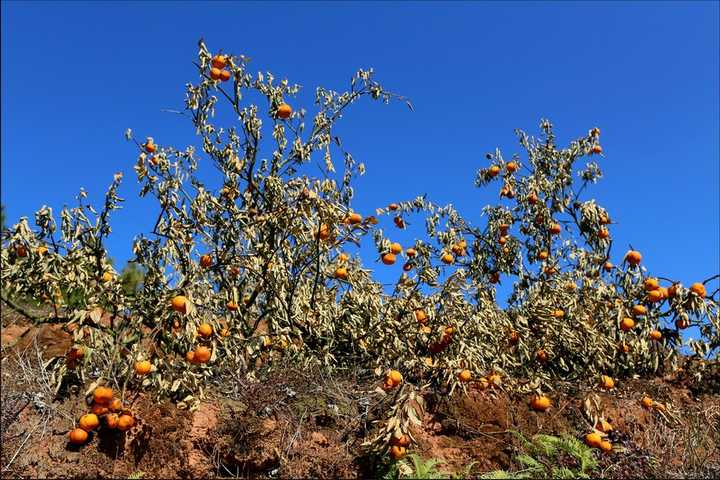

Photo 11: the unmanaged orchard becomes the outbreak point of the "epidemic disease".
2. The villagers do not control the area, and the lost management orchard becomes the outbreak point of the "epidemic disease".
Driven by interests, Ganzhou fruit growers planted navel oranges all over the land that could be used in the mountains and fields, and even the trees and shrub belts between orchards and orchards were excavated and planted in large areas. Once the price falls and abandons it, the unmanaged orchard becomes the flashpoint of the "epidemic disease".
Huanglong disease is mainly transmitted by citrus planthopper, and the control of planthopper is particularly important in the control of Huanglong disease. Farmers in southern Jiangxi covered the mountains and fields with navel oranges, and there was no barrier between the fields, making it easy for wood lice to spread, contributing to the outbreak of Huanglong disease.
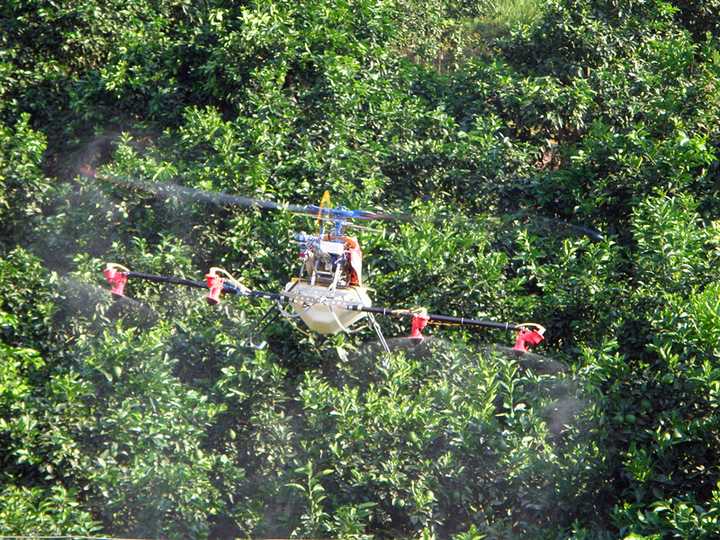

Figure 12: With the spread of Huanglong disease, Anyuan County began to use plant protection aircraft to control psyllid uniformly.
3. Soil deterioration caused by excessive fertilizer and drug use, root rot of fruit trees, breeding of diseases
Navel orange root rot is a common disease of navel orange, mainly due to soil hardening of orchard, imbalance of soil nutrient structure, browning and rotting of fibrous root cortex in different degrees, weak tree vigor after disease, poor resistance to pathogenic bacteria, easy to suffer from Huanglong disease attack.
In 2013, the expert team of Fruit Tree Huanglong Disease Research Office of Zhongnan Agricultural Science and Technology Development Institute conducted field investigation in Xunwu, Anyuan, Xinfeng and other navel orange counties, and retrieved several soil samples of navel orange orchard for analysis and research. It was found that the soil nutrient structure of sample orchard was seriously unbalanced, and the high residue of chemical fertilizer and pesticide in soil led to deterioration of fruit tree growth environment, resulting in root rot phenomenon in large area of orchard, which was also caused by orange Huanglong disease outbreak in Ganzhou area. Important factors.
--------------------------------------------------------------------------------------------------------------------------------------------
When Huanglong disease appears in small areas, farmers are reluctant to cut it down, which makes the disease worse-
1. Farmers are reluctant to cut down trees, resulting in the spread of the disease
Yellow dragon disease often has incubation period, farmers often can not quickly and accurately identify the disease tree, is also a cause of transmission. In Gannan area, more farmers found the disease but were reluctant to cut it down, or cut down the diseased trees and handled it improperly, which aggravated the spread of the disease. Because cutting down trees cuts down the only source of income. When a small outbreak occurs, psyllids can quickly spread disease to other orchards once they settle on diseased trees.
2. It is difficult to implement unified prevention and control, and farmers refuse to deal with diseased trees.
The most difficult point in Huanglong disease prevention and control is unified defense rule. As long as one family does not care, everyone will follow bad luck. Later, orchards with infection rates exceeding a certain percentage must be cut down. From persuading farmers to plant trees in those years to persuading fruit farmers to cut trees now, grass-roots cadres have also encountered the most troublesome task.
The local government has realized the seriousness of the problem and issued policies to subsidize farmers, such as sending technicians to help farmers control it, cutting down a diseased tree and subsidizing 10 yuan. But because subsidies are too small, many farmers refuse to deal with diseased trees.
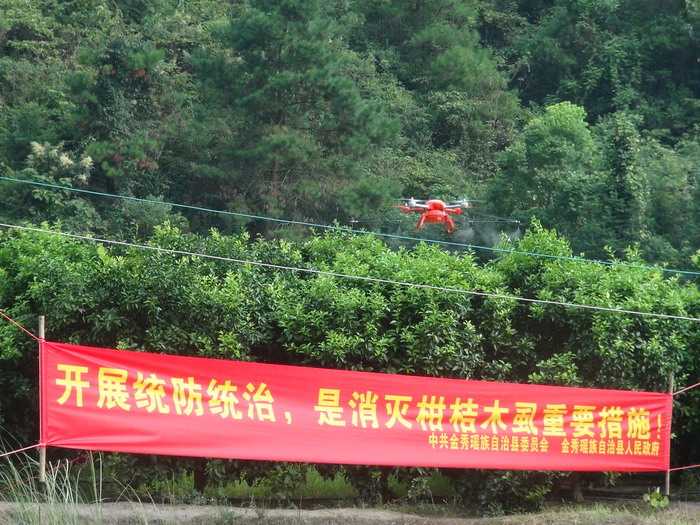

Figure 13: unified defense rule is an important step in the prevention and treatment of Huanglong disease.
Not paying attention to the quarantine of seedlings and not forcing the planting of virus-free seedlings also lay a hidden danger for the outbreak of Huanglong disease.
1. Seedling trading is out of control, resulting in out of control of quarantine
For the source of navel orange industry, poor control of seedlings is also an important reason for the outbreak of Huanglong disease. In the world, planting virus-free seedlings is the norm for the prevention and control of Huanglong disease. However, in Gannan, the lack of supervision, not paying attention to the quarantine of seedlings and not forcing the planting of virus-free seedlings have become one of the reasons for the spread of the disease.
Although there are "Citrus Seedling producing area Quarantine regulations" and "implementation Plan for breeding and supply of Citrus virus-free seedlings in Ganzhou City" and so on, the navel orange seedlings purchased by farmers have not been strictly quarantined. a large number of diseased seedlings flow to the market, and if you want to plant trees, buy navel orange seedlings on the market, resulting in long-distance and large-scale artificial spread of Huanglong disease.
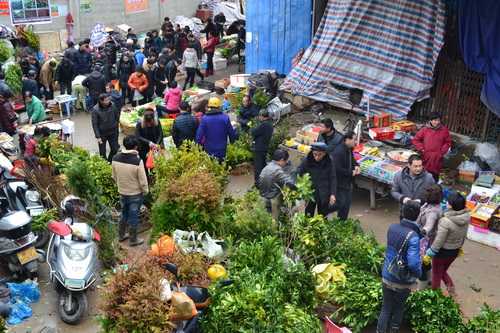

Figure 14: seedling trading out of control
2. Farmers have little awareness of epidemic prevention and introduce seedlings from epidemic areas.
The transfer of scion seedlings, which should have been strictly controlled by the government, has not been strictly implemented. Driven by interests, a small number of seedling farmers or orange farmers with weak awareness of epidemic prevention illegally introduced infected scion seedlings from Guangdong, Fujian, Wenzhou and other epidemic areas, laying a hidden danger for the outbreak of Huanglong disease.
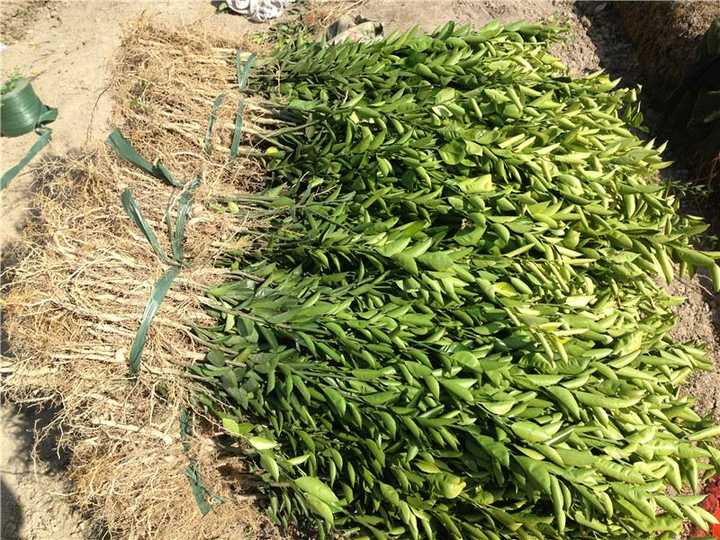

Figure 15: Poor quarantine and control of seedlings is an important reason for Huanglong disease outbreak
--------------------------------------------------------------------------------------------------------------------------------------------
Through government intervention and active management, Huanglong disease was controlled in the United States.
1. Foreign experience proves that Huanglong disease is incurable, but it can be effectively controlled.
Huanglong disease is temporarily incurable, but losses can be minimized through prevention and control. California and Florida in the United States are also important navel orange planting areas in the world, and the citrus industry in the United States is also facing the threat of Huanglong disease.
Figure 16: The citrus industry in the United States is also threatened by Huanglong disease
However, the United States, with its effective management and control, in accordance with the idea of strengthening quarantine, compulsory use of virus-free seedlings, timely excavation of diseased plants, strict control of citrus psyllid, reduced the loss to a manageable level. According to a report released by the National Agricultural Statistics Service (NASS) of the United States Department of Agriculture in September 2011, the overall planting area of Florida citrus decreased by 2.3% compared with 2010, but the citrus yield increased by 4%.
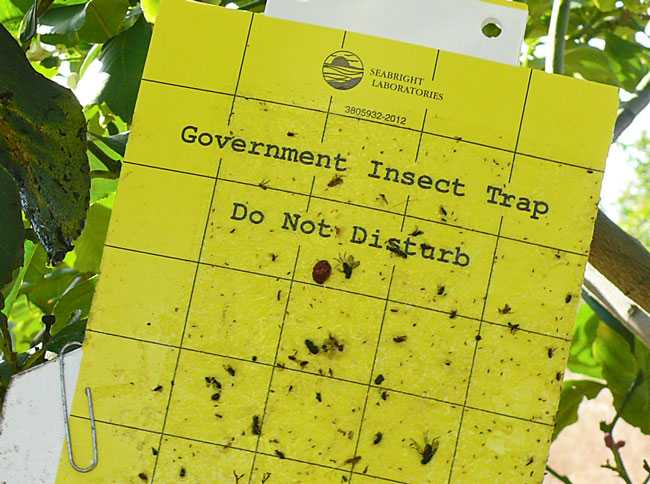

Figure 17: U.S. government mandates insect stickers for orange farming
2. The US government invests heavily in unified research and control of Huanglong disease every year.
Legislation passed by the U.S. Senate in 2012 will provide substantial funding each year for citrus yellow blight research to combat citrus yellow blight in Florida and other major citrus producing states. Big companies such as Coca-Cola are also investing hundreds of millions of dollars to remediate citrus orchards cut down by Huanglong.
In order to effectively prevent the spread of Huanglong disease, the United States Department of Agriculture (USDA) spent 30 million US dollars to build a "Huanglong disease prevention and control" project. It is understood that the USDA will divide this project into two parts: one part is a temporary solution: the establishment of a multi-agency linkage team including the USDA Animal and Plant Health Inspection Service (APHIS), the Agricultural Research Service (ARS), the National Institute of Agricultural Food Technology (NIFA), and the national agricultural department and agricultural industry groups. Citrus production areas are closely monitored to minimize losses from Huanglong disease.
The other part is the establishment of a long-term citrus plant disease research and education programme (CDRE) aimed at finding a definitive solution to the plant diseases threatening the citrus industry.
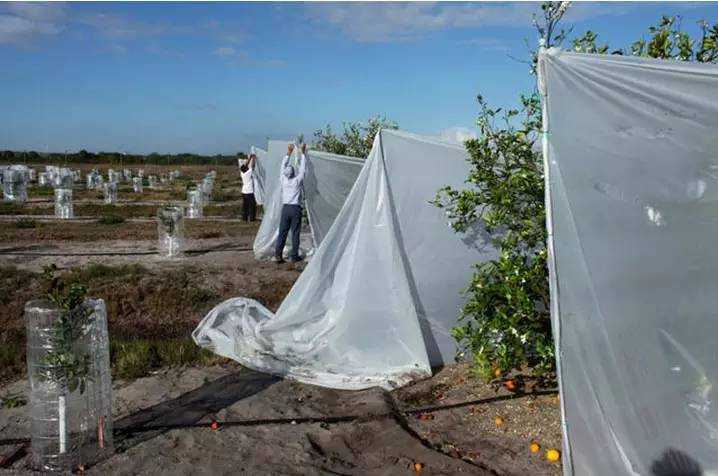

Figure 18: isolation and control of Huanglong disease plants
In 2013, the United States also established the Huanglong Disease Management Center with American countries. Establish standard operating procedures to deal with Huanglong disease, and establish risk communication, supervision, diagnosis and management mechanism. Establish regional information, communication system and network mechanism. Set up a plant management organization to promote regional prevention and control. Establish a rehabilitation plan for orange orchards and send a team of experts to prevent and cure Huanglong disease.
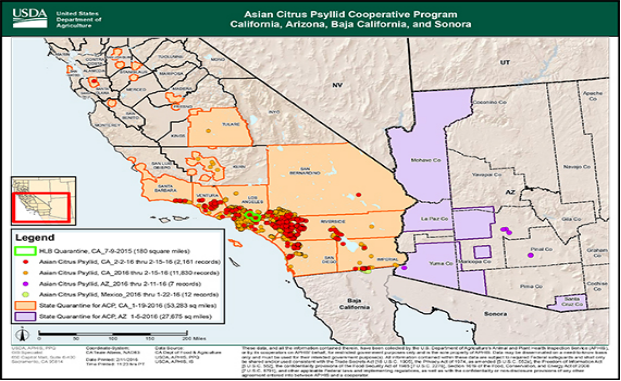

Figure 19: Citrus psyllid control network in California, USA
3. Perfect Huanglongbing prevention and control technology in the United States
(1) Early diagnosis and early treatment: The University of Florida has developed a device that can accurately detect Huanglongbing, which can quickly diagnose Huanglongbing when the human eye cannot judge, with an accuracy rate of 98%. After diagnosis, the infected area should be blocked in time, and the entry and exit of citrus seedlings should be strictly controlled to prevent them from spreading outward.
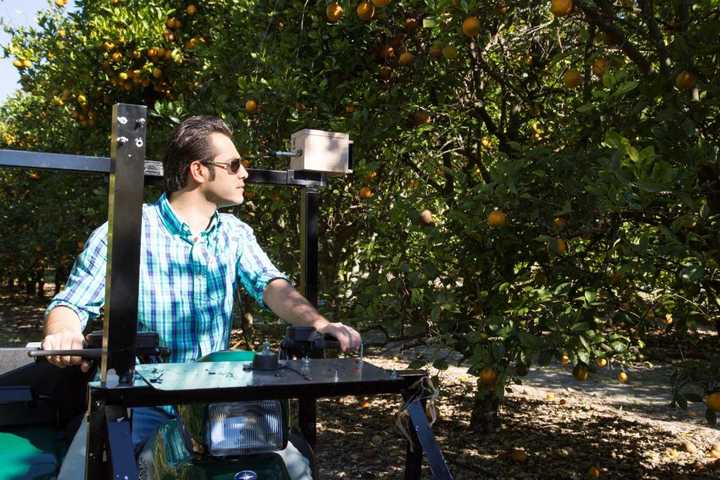

Photo: 20: equipment developed by the University of Florida for accurate detection of Huanglong disease
(2) soil quality control: different management methods are used to maintain normal production according to the degree of infection. in addition, the pH value of environment is controlled and the pH value of irrigation water and soil is reduced in order to protect citrus root system and improve disease resistance.
(3) Heat treatment: the study found that heat treatment technology can temporarily prolong the life of diseased trees, maintain a certain yield and reduce loss. The next step will be to test and study the effect of heat treatment in large orchards.
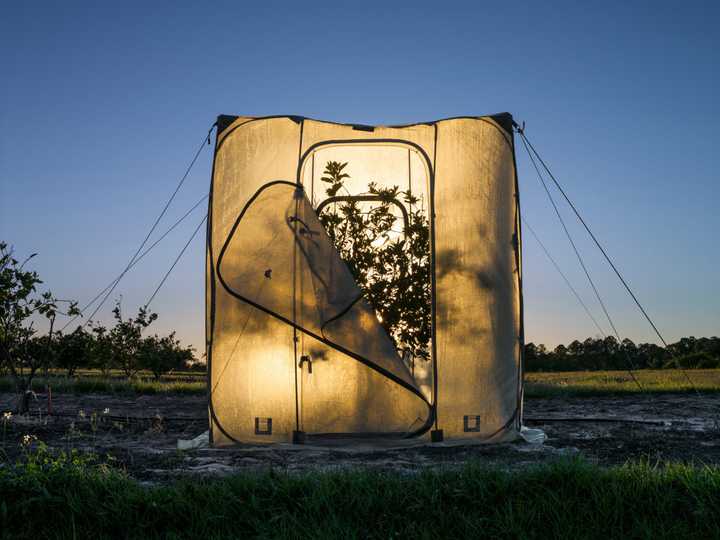

Figure 21: heat treatment of infected navel orange trees
(4) Biological control: citrus planthopper parasitic wasp and Ali planthopper wasp have been proved to be the two most important parasitoids of citrus planthopper, which can effectively control the field population density of citrus planthopper, and should continue to expand their production and release in the field. In addition, the adults of citrus planthopper can be controlled by fungi.
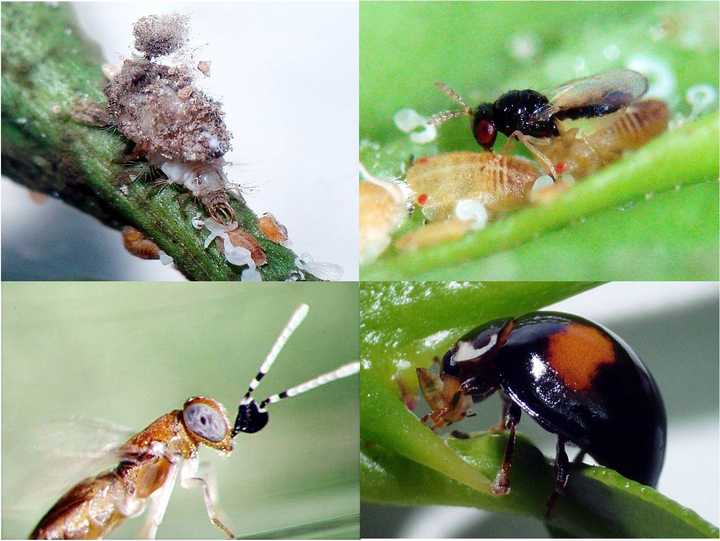

Figure 22: Biological control is an important means of controlling citrus psyllid
(5) Physical control: Set traps to trap psyllids, such as yellow sticky plates, trap lamps, etc. It is understood that the Florida linkage team will investigate citrus orchards in their respective areas every once in a while, report the test results, and analyze the data by establishing statistical models. To date, a statewide Huanglong disease surveillance system has been established. In addition, the linkage group will also use the above measures to help growers control citrus psyllid, and truly achieve the effect of unified control.
--------------------------------------------------------------------------------------------------------------------------------------------
Gannan region needs unified prevention and control, actively dealing with Huanglong disease epidemic situation
In southern Jiangxi, farmers planted large area and single planting, did not pay attention to the construction of stable ecological environment, did not control the area reasonably, and a large number of fertilizer application led to the imbalance of soil nutrient structure and environmental deterioration. Reluctance to cut down trees after the outbreak exacerbated the spread of the disease.
The government lacks responsibility for planting planning, compulsory seedling quarantine, and diversification of planting varieties. After the outbreak, action was not fast enough and there was no good response plan, which also promoted the spread of Huanglong disease.
The outbreak of Huanglong disease in Gannan is not only a natural disaster, but also a man-made disaster. In the face of Huanglong disease, we should learn from experience and respond positively.
Harvest Research Office provides some suggestions for navel orange growers in Gannan, hoping that navel orange industry in Gannan can take more scientific countermeasures and less blind attempts in the face of Huanglong disease disaster.
Blocking the source: it is necessary to grasp the nursery stock in the early stage of industrial development and control the source of germs. New orchards do not carry germs, and orchards in epidemic areas do not increase germs. To block the source, we must first manage the seedlings. At the beginning of orchard construction, we should attach great importance to the purchase of seedlings and put an end to the introduction of diseases and insect pests as much as possible. Nursery stock breeding must allow qualified and qualified companies or individuals to produce, implement net room cultivation and germ-free seedling.
Insecticidal vector: it is to kill the intermediate medium and chief culprit of citrus yellow shoot disease pathogen transmission in industrial base-citrus psyllid. This pest is still in cahoots with the diseased tree and should be eradicated thoroughly. There are concentrated time periods (tender shoot stage, low temperature stage) can be controlled. The practice proved that spraying pesticides in six key stages of continuous orchards in winter, early spring, spring shoot, summer shoot, autumn shoot and late autumn shoot could effectively kill citrus psylla.
Re-planning: scientific planning, rational control of planting area. Rational conversion of farmland to forest, and planting tall trees such as Chinese fir between different villages and towns as ecological isolation zones to hinder the spread of psyllid. In addition, adjust the planting proportion of single varieties and increase the proportion of varieties with strong disease resistance. A navel orange planting system with reasonable area density and diversified varieties was formed.
Heavy technology: the change of concept may find a breakthrough in industrial development. The urgent task is to do a thorough job of "prevention." The government organized a unified control regime, using early diagnosis techniques, biological control, physical control techniques to control psyllids, while strengthening management, controlling environmental pH values, reducing pH values in irrigation water and soil to protect citrus root systems and improve disease resistance.
Source: Public Number "Miller's Wheat Field" Produced by Harvest Research Laboratory Loading Please indicate the source
- Prev

Teaching video of coffee cultivation technology
Coffee, cocoa and tea are called the three major beverages in the world, and their output, consumption and output value all rank first. In addition to being used as a beverage, coffee can also extract caffeine and coffee oil; in medicine, it can be used as an anesthetic, stimulant and diuretic cardiotonic agent. Coffee pulp is available
- Next
There is no cure for Huanglong disease! Learn these three tricks to make Huanglong disease have nowhere to hide.
On May 22, I went to Guilin to participate in the sugar orange planting exchange meeting. I gained a lot, learned a lot of new knowledge, and met many citrus technology giants and growers. However, it is surprising that there are still people preaching Huanglong disease on such a serious occasion.
Related
- Fuxing push coffee new agricultural production and marketing class: lack of small-scale processing plants
- Jujube rice field leisure farm deep ploughing Yilan for five years to create a space for organic food and play
- Nongyu Farm-A trial of organic papaya for brave women with advanced technology
- Four points for attention in the prevention and control of diseases and insect pests of edible fungi
- How to add nutrient solution to Edible Fungi
- Is there any good way to control edible fungus mites?
- Open Inoculation Technology of Edible Fungi
- Is there any clever way to use fertilizer for edible fungus in winter?
- What agents are used to kill the pathogens of edible fungi in the mushroom shed?
- Rapid drying of Edible Fungi

